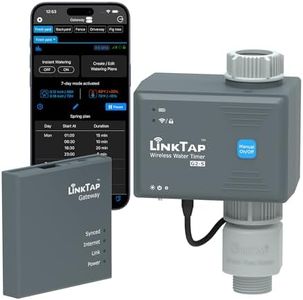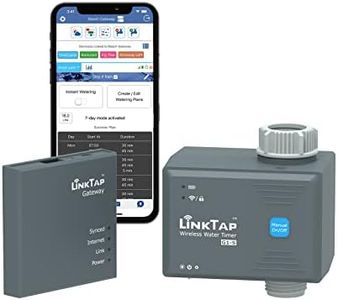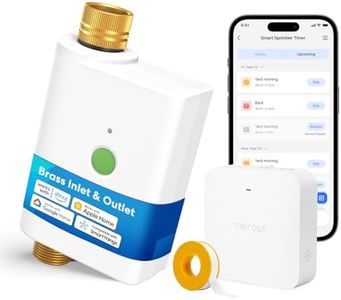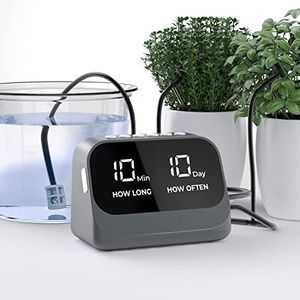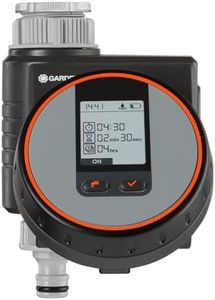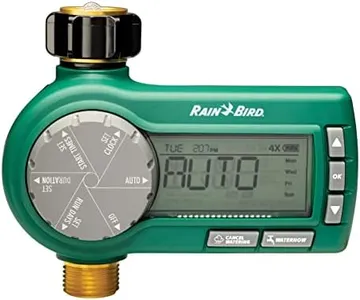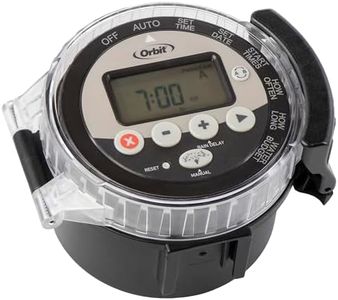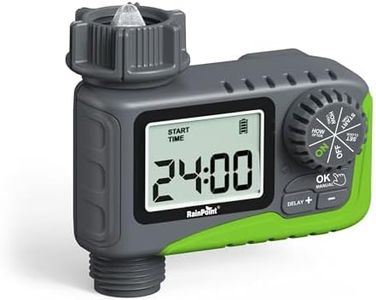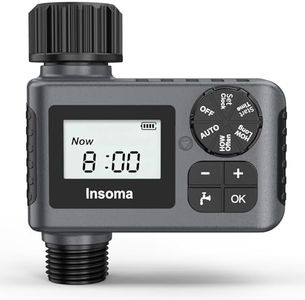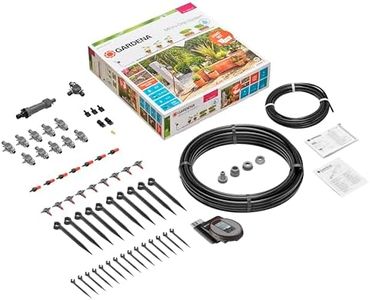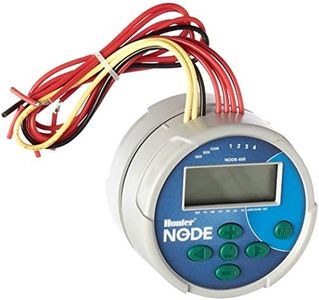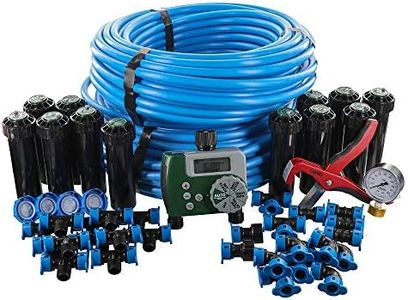We Use CookiesWe use cookies to enhance the security, performance,
functionality and for analytical and promotional activities. By continuing to browse this site you
are agreeing to our privacy policy
10 Best Drip Irrigation Timer
From leading brands and best sellers available on the web.Buying Guide for the Best Drip Irrigation Timer
Choosing the right drip irrigation timer can make a huge difference in how easily and effectively you keep your garden or landscape watered. There are many options available, each suited to different needs and garden sizes. When shopping, it's important to consider both the size of your irrigation system and your watering habits. The goal is to pick a timer that matches your requirements in terms of flexibility, ease of use, and weather resistance so that you can automate watering without worry.Programming OptionsProgramming options refer to how you can set and customize when and how often your irrigation timer waters your plants. This is important because different gardens and plants have unique watering needs. Basic timers often allow for once or twice daily watering, while more advanced models can let you set multiple cycles, specific weekdays, or intervals. If your garden needs simple, routine watering, a straightforward timer will work. But if you have different types of plants or complex schedules, look for a timer with flexible or customizable programming.
Number of ZonesThe number of zones describes how many separate areas or irrigation lines a timer can control. This matters if your garden has plants with varying watering needs or is spread out over a large area. Simple timers control one zone, enough for a small vegetable patch or flowerbed. If you have a larger property with different plant types in various locations, consider a timer that can manage two or more zones so you can tailor watering for each area.
Watering DurationWatering duration is the amount of time the timer allows water to flow during each cycle. This is important because different plants and soil types require different amounts of water. Timers will differ in how short and long the cycles can be set for—some start as low as a minute, while others allow for much longer periods. Make sure the timer you choose can match the shortest and longest intervals your plants need to avoid both underwatering and overwatering.
Power SourceDrip irrigation timers are powered in various ways, usually by batteries, solar energy, or direct connection to an electrical outlet. The power source affects placement options and maintenance needs. Battery-powered timers are portable and easy to set up without wiring, but will require occasional battery changes. Solar-powered timers reduce battery changes but need good sunlight. Electric timers need an outlet nearby but are maintenance-free. Think about where you’ll install the timer and how often you want to perform upkeep when picking the power type.
Weather ResistanceWeather resistance indicates how well a timer can withstand outdoor conditions such as rain, sun, and extreme temperatures. Since drip irrigation timers are usually installed outside, choosing one that’s waterproof and built to handle different weather is crucial for long-term reliability. A weather-resistant timer will last longer and need fewer repairs or replacements, especially if your timer will be exposed to rain or direct sunlight. Always check the manufacturer’s specifications for outdoor use before making your decision.
Ease of UseEase of use covers how simple it is to set up and operate the timer. Some timers offer intuitive dials and clear displays, making them friendly for beginners, while others have more complex interfaces that may provide greater control but take longer to learn. If you’re new to drip irrigation or want a stress-free experience, look for a timer with straightforward controls and a clear manual. More advanced users may benefit from extra features even if they require a learning curve.

